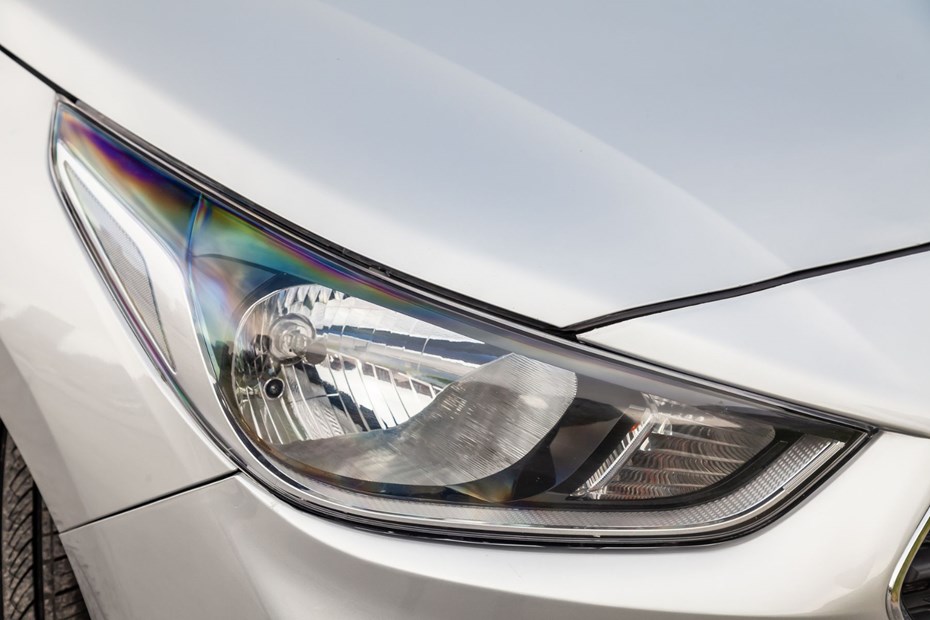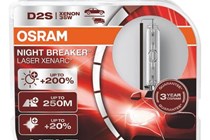Xenon bulbs, or HID (High-Intensity Discharge) bulbs, have been responsible for changing the face of car fronts as an alternative to traditional halogen headlight bulbs. You might think that Xenon bulbs are a relatively new development, but they’ve been around since 1951, although it wasn’t until forty years later, in 1991, that the technology made it possible for BMW to use Xenon bulbs in its 7 Series for the first time. Initially, they were the preserve of high-end luxury models and noted for their brighter and whiter light, which is closer to natural daylight, greatly improving visibility at night, but as the technology improves and becomes less cost-prohibitive, Xenon headlights are becoming more and more popular. Xenon bulbs will last longer, use less energy and give better illumination as the development of the car headlight continues.
Unfortunately, it’s not all good news. There is a myth that Xenon bulbs last forever; this is not the case. They are very unlikely to fail completely, but the brightness emitted degrades gradually with age, so much so that the average owner tends not to notice that the headlights are weakening, and despite dimming with age, they will still emit enough light to pass the MOT test. So it is recommended that you replace them after five years of use.
If you are considering fitting Xenon bulbs as an aftermarket upgrade, the legal implications are also worth considering. According to the GOV.UK website: “In the Department for Transport’s view, it is not legal to sell or use after-market HID lighting kits for converting conventional Halogen headlamps to HID Xenon. If you want to convert your vehicle to Xenon HID, you must purchase completely new Xenon HID headlamps.” New vehicles aren’t affected as they already comply with European-type approval regulations. With all that said, let’s take a look at some of the best Xenon bulbs you can buy. To give a fair comparison, we’ve decided to look at different versions of the D2S bulb as, at the time of writing, it is the most popular Xenon bulb in the UK.
The best Xenon bulbs at a glance:
Editor’s choice: Osram Xenarc Original – Buy now from Amazon UK
Best for blue tint: Osram Xenarc Cool Blue Intense – Buy now from Amazon UK
Best for value: Wattstar OEM Quality D2S 8000K – Buy now from Amazon UK
The best Xenon Bulbs
Pros
- Great choice of bulbs
- Easy to select the correct bulbs for your car
Cons
- Amazon Prime is needed for free delivery
Editor's choice
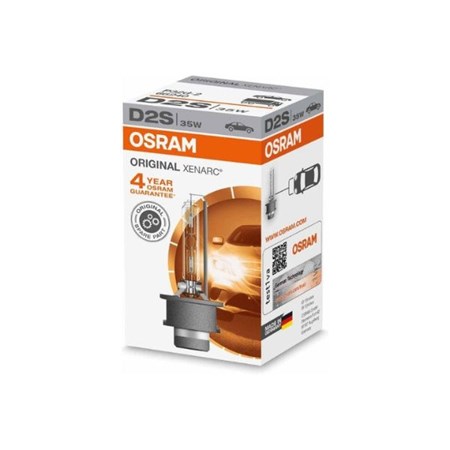

Osram has introduced a product authentication system called the Osram Trust Programme, which allows you to verify the authenticity of the bulbs you purchase, ensuring you get a top-quality product along with a four-year guarantee.
Pros
- Good value
- OEM standard
Cons
- Output is not quite as white as hoped
The best Xenon bulb for durability
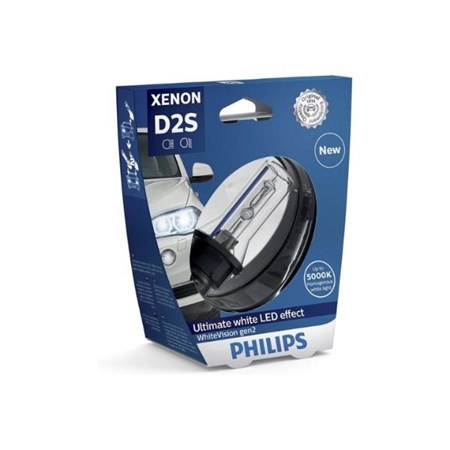

Pros
- Crisp white look
- Quartz glass for improved reliability
Cons
- No blue tint
The best Xenon bulb for performance
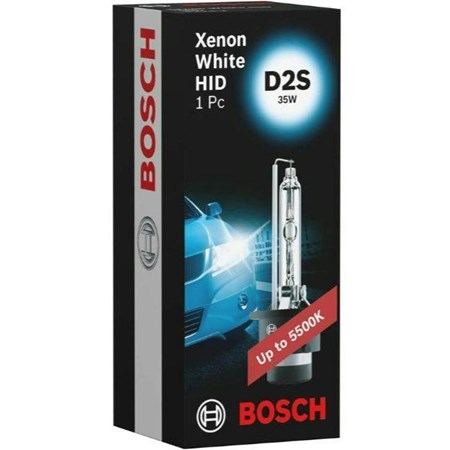

Pros
- Good value
- Long lifespan
Cons
- More yellow than blue
The best Xenon bulb for night-time driving
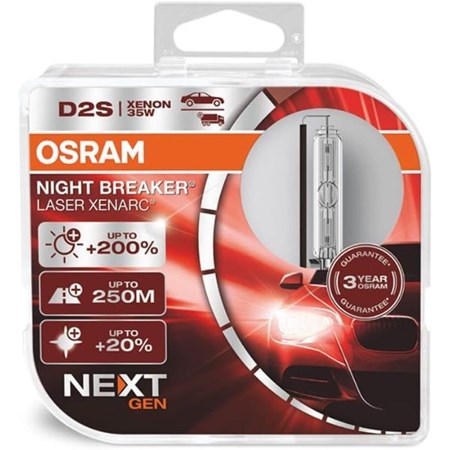

Pros
- Extended night-time vision
- Long beam
Cons
- Shorter guarantee than the Osram Xenarc Original
The best blue look bulb
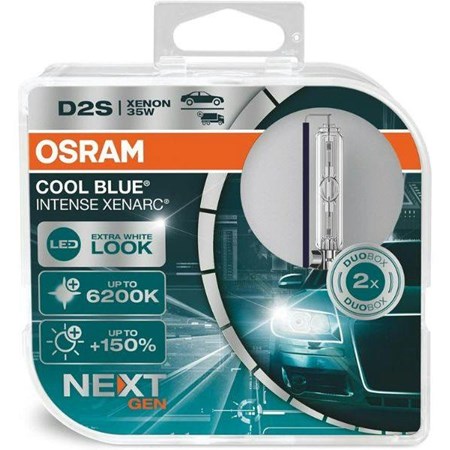

Pros
- Stylish appearance
- Less night-time driving fatigue
Cons
- Colour temperature can take some time to stabilise
The best Xenon bulb for value
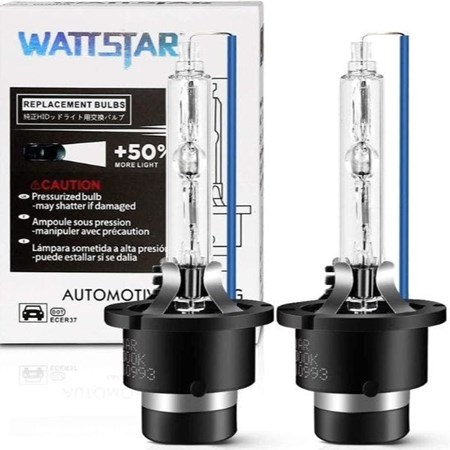

Pros
- Great value
- Choice of colour temperatures
Cons
- Slightly lower performance
The best Xenon bulb set
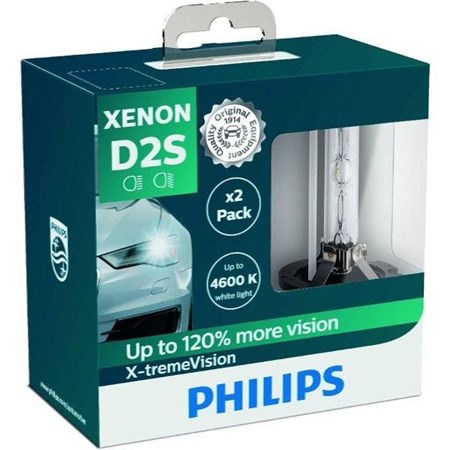

Pros
- Ideal set for replacing both bulbs
- Good value
Cons
- Warm rather than blue lights
Xenon headlights: frequently asked questions
What is the difference between Xenon and Halogen bulbs?
Xenon bulbs produce light by creating an electrical arc between two electrodes in a gas-filled chamber, typically using xenon gas, whereas halogen bulbs use a filament. Xenon bulbs tend to be brighter and have a longer lifespan than halogen bulbs.
What are the main types of Xenon bulbs?
The first to be launched were the D1 bulbs in the early 90s. These have igniters that are built into the bulb base. Next came the D2 series. These do not have igniters integrated into the base, so they are much smaller. Later, the D3 and D4 bulbs that have been in use since 2009 do not contain any mercury and are more environmentally friendly. The series D bulb type is followed by either an R or an S suffix, with the R meaning the bulb comes with an opaque shield that covers parts of the bulb and is designed to work in Complex Surface Reflector headlamp units. Bulbs with the suffix S don’t have this cover and are designed to work in Projector headlamps. Xenon bulb types are not interchangeable.
Are Xenon bulbs legal?
If they are fitted as standard to a new car, yes, they are. It is illegal to retrofit them to conventional Halogen headlights (for example, if you modernise your car) without replacing the entire headlamp. This only applies to road cars; a track-only car, for example, can be upgraded.
How long do Xenon bulbs last?
Anywhere from 2,000 to 3,000 hours of use compared to 500 to 1,000 for a halogen bulb. It’s worth remembering, though, that the brightness of a Xenon bulb gradually reduces over time, and it is recommended that it be replaced every three to five years.
Is it worth upgrading to Xenon bulbs?
There is quite an initial cost involved in upgrading, but some of the benefits include whiter, more natural light, brighter headlights, a wider beam, longer-lasting bulbs, energy efficiency and lower heat output. But remember to make sure you can upgrade legally.
Alex Boyd is a Commercial Content Writer at Bauer Media writing for Parker’s and CAR, and loves travel, gardening, DIY and music.
Sign up for the Parkers Newsletter to keep up to date with more of the latest reviews, news, and recommendations from the Parkers team.
Just so you know, whilst we may receive a commission or other compensation from the links on this website, we never allow this to influence product selections – read why you should trust us



